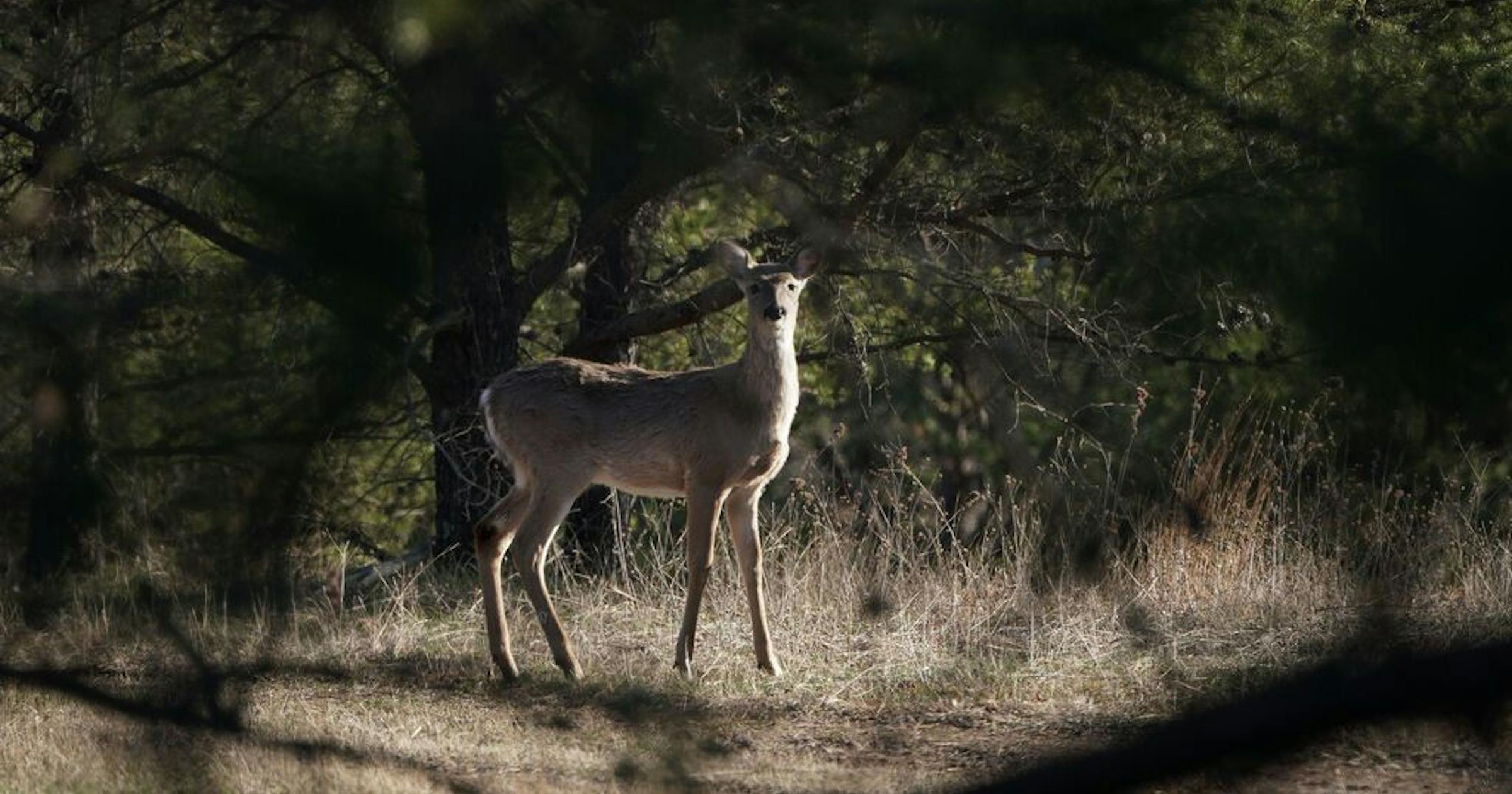It’s not on the northern forest roads, or on a long, winding curve where it’s hard to see. It’s not in the grasslands or on the narrow state highways that roll past farms and thick cornfields. The most likely place for a deer to suddenly jump in front of a car and cause an accident in Minnesota is just outside Minneapolis, on one of the busiest roads in the state — Interstate 94 between Maple Grove and St. Cloud.
“If you get just outside of the real urban area and into the suburbs of the Twin Cities, you’ll see a combination of high deer concentrations and a lot of traffic,” said Ron Moen, a biologist with the Natural Resources Research Institute in Duluth.
Scientists from the institute and the University of Minnesota are wrapping up a project to map exactly where drivers in the state are most likely to hit a deer. The map, which has not yet been published, will be publicly available by late summer. The hope is that the data will help highway engineers find the most dangerous stretches and prioritize where to put wildlife fences or other protections, Moen said.
The study found that about two-thirds of deer-vehicle collisions in Minnesota each year occur just outside the Twin Cities, particularly in the suburbs leading to St. Cloud.
That’s because there appear to be three main factors in deer collisions, Moen said: the speed of the vehicle, the number of cars on the road and the number of deer in the area.
Add to that the speeds on the highway and it becomes clear that it can be difficult for suburban drivers to avoid deer.
Moen said he and other researchers began the study with the idea that visibility would play a much larger role in the crashes than the data ultimately showed. Large, winding roads in wooded areas had fewer deer collisions than expected.
“That’s probably partly because people pay more attention to the bend and drive a little slower,” he says.
The study was funded by the state’s environmental fund and is part of an initiative to make roads safer for both drivers and wildlife.
The Minnesota Department of Transportation recently found that simple chain-link fencing at the spawning grounds of endangered turtles significantly reduces the number of animals killed by cars in the spring. For larger animals such as deer, elk and moose, western states have had success building wildlife bridges across busy highways.
How many deer are affected each year?
It’s difficult to calculate how many deer hit drivers in Minnesota each year.
According to the Minnesota Department of Public Safety, about 1,200 deer crashes are reported to police each year, resulting in multiple deaths, dozens of hospitalizations and about $20 million in property damage. But those are only the worst cases, which usually involve motorcycles, serious injuries, or totaled or badly damaged cars.
According to Moen, the vast majority of collisions with deer, more than 90%, are not reported to the police.
State Farm Insurance estimates that Minnesotans kill about 35,000 deer each year, causing several hundred million dollars in property damage. But the company’s formula for arriving at that number is not public.
As part of the new map study, Moen spent months patrolling the side of the road counting deer carcasses to determine which source of numbers was closest to the truth.
“We haven’t made a new statewide estimate, but the State Farm estimate is closer to the right one,” he said. “That 35,000 or 36,000 number is the right order of magnitude.”
Moen says the best solutions in Minnesota will likely be a combination of fences and driver vigilance.
He said wildlife crossings appear to work better in states where large animals move along predictable migration routes through the hills and mountains.
“In the West, those deer and other ungulates are already being directed into certain areas,” he said. “Our deer are everywhere, and they’re crossing roads everywhere.”
But by driving a little slower, especially on suburban freeways, and putting up some significant fencing, you can prevent a deer from walking right up your bumper, he said.
